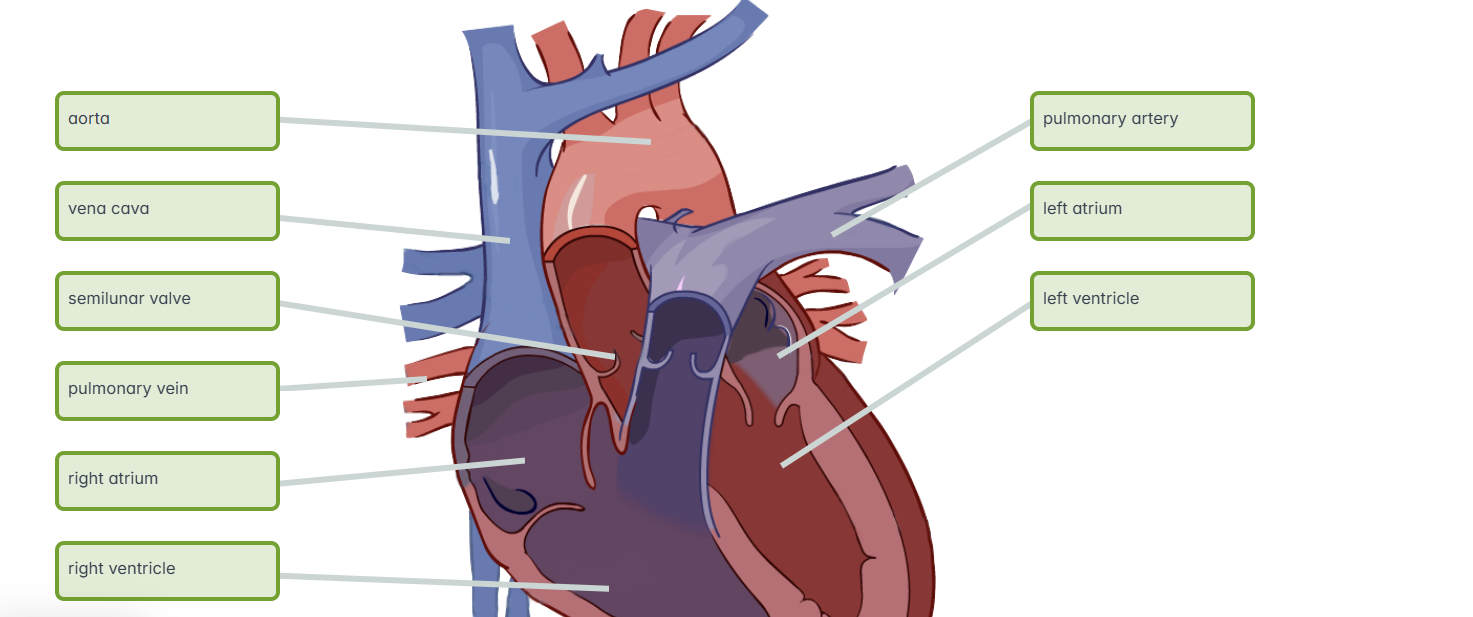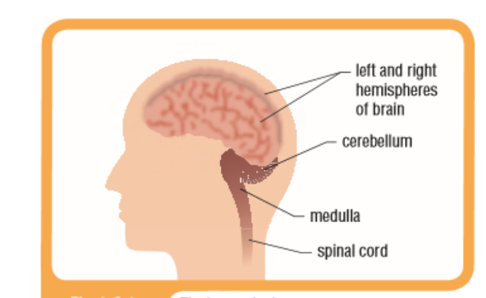Body Coordination Pearson 9 Chapter 7
1/32
Earn XP
Description and Tags
Name | Mastery | Learn | Test | Matching | Spaced |
|---|
No study sessions yet.
33 Terms
Artery
a blood vessel that carries blood away from the heart
Vein
blood vessel that carries blood back to the heart
Capillary
the narrowest type of blood vessel; capillaries reach nearly every cell of the body
Haemoglobin
the pigment that gives red blood cells their colour
Oxygenated
blood rich in oxygen
Deoxygenated
blood with very little oxygen and lots of carbon dioxide
Endothermic
able to maintain a constant body temperature
Ectothermic
animals that rely on environmental temperature to regulate body temperature. Ectothermic animals have a body temperature similar to that of their surroundings
Central nervous system
the brain and spinal cord.
Peripheral nervous system
the nerves that carry messages to and from the central nervous system and other parts of the body
Hormone
chemical substances that act as messengers in the body
Receptor
a specialised cell that detects stimuli (changes)
Neuron
a nerve cell
Sensory neuron
nerve cells that carry messages from cells in the sense organs to the CNS
Effectors
muscles or glands that put the messages into effect
Reflex action
quick, automatic actions that protect the body from danger; also known as reflexes
produces the hormones-
• human growth hormone (HGH), which controls cell growth and development
• antidiuretic hormone (ADH), which controls water balance. Also stimulates other glands to release their hormones.
produce the hormones-
• oestrogen, which controls female sexual development and the menstrual cycle
• progesterone, which controls the ovary and uterus in pregnancy

heart diagram

The nervous system is a communication network that controls all the other systems of your body. The human nervous system is made up of two main parts-
.Central nervous system (CNS). This is made up of your brain and spinal cord. The CNC receives information from all over the body, processes that information and then sends out messages telling the body how to respond.
.Peripheral nervous system(PNS). This is made up of the nerves that carry messages to and from the CNS and other parts of the body.
brain
made of 3 parts: cerebellum, cerebrum and medulla. brain and spinal cord protected by layer called meninges. also contains cerebrospinal fluid which is shock absorber
